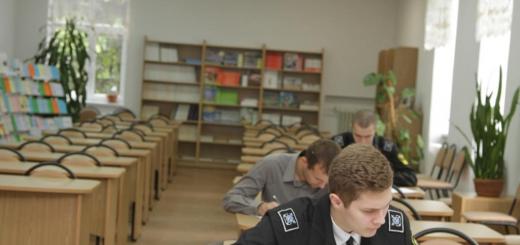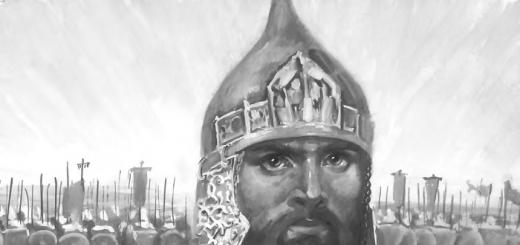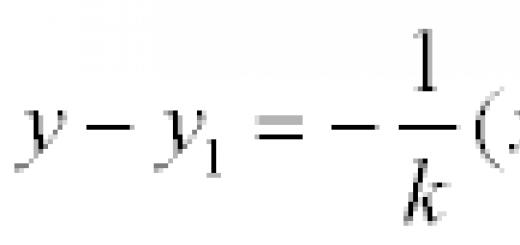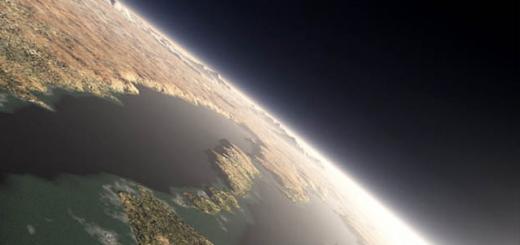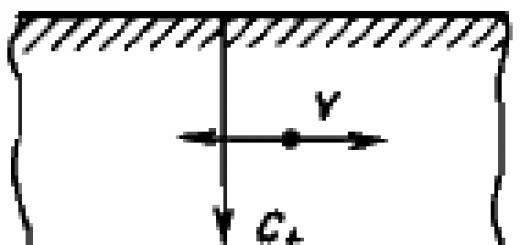solar system
According to a scientific hypothesis, our system formed from a dark gas and dust cloud 4.6 billion years ago. As a result of powerful transformations, the cloud turned into a young system with a central yellow star, planets, asteroids and various cosmic bodies.
Structure of the Solar System
Our system includes a star of medium brightness - the Sun, and 8 classical planets that revolve around it in elliptical orbits at various distances. It is noteworthy that until 2006 there were 9 planets in the system, the last one being Pluto. However, as a result of new discoveries, Pluto was reclassified, and as a result it acquired the status of a dwarf planet along with Ceres, Eris and other similar objects.
K, Pluto has a moon Charon, which is half the size of the dwarf planet. Further reclassification of Pluto into a double planet is being considered, but today there is not enough information about the structure of the cosmos for such a classification.
The inner and outer planets are separated by an asteroid belt.
What are the inner planets
The planets of the system are divided into small warm (inner) and cold gas supergiants (outer). The first type includes Mercury, Venus, Mars and Earth. To the outer ones - Juriter, Saturn, Uranus, Neptune. The inner planets have a solid core and consist of metals, gases (oxygen, hydrogen and others), and other heavy elements. The largest are Earth and Venus with sizes of 1 and 0.81, respectively. Earth and Mars have satellites. In particular, the “blue” planet has the Moon, the “red” planet has Phobos and Deimos, which translates as “fear” and “horror”. This name for the moons of Mars is due to the fact that the object was named after the god of war Mars (aka Ares).
The inner planets are significantly smaller in size than the gas giants.
The inner and outer planets are separated by a wide asteroid belt that extends between Mars and Jupiter. Unlike gas giants, rocky planets do not have rings made of asteroid debris, gas and dust. The smallest Uranus is 14 times larger than the largest “warm” planet - Earth.
In the scientific world, it is believed that on Earth-like planets the possibility of the emergence or presence of life is higher than on gas giants. Largely due to the favorable climate and internal structure of such planets. In this regard, the search for such space objects is receiving increased attention from astronomers and scientists.
Questions:1. How is the name “wandering stars” translated from Greek?
2. Name the inner planets.
3. Which planets are outer?
Planet - a solid body, or a solid body and gas, that orbits a star.Even ancient people noticed constantly moving stars in the sky, and the Greeks called them that "wandering stars" that is, in Greek "planets".
There are nine planets in the solar system: Mercury, Mars, Venus, Earth, Neptune, Uranus, Saturn, Jupiter, Pluto.
Inner planets- Mercury, Mars, Venus, Earth.
Planets belonging to this group are small in size and mass; the average density of these planets is several times higher than the density of water; they rotate slowly around their axes; they have few companions (they have Mercury and Venus they don't exist at all Mars- two, y Earth- one).
The similarity of the terrestrial planets does not exclude some differences. For example, Venus, unlike other planets, rotates in the direction opposite to its movement around the Sun, and is 243 times slower than the Earth.
Circulation period Mercury(i.e., the year of this planet) is only 1/3 greater than the period of its rotation around its axis.
The angles of inclination of the axes to the planes of their orbits are Earth and at Mars approximately the same, but completely different Mercury and Venus. Same as Earth, there are seasons Mars, although almost twice as long as on Earth.
Similarities and differences are also found in the atmospheres of the terrestrial planets. Unlike Mercury, which, like Moon, practically devoid of atmosphere, Venus and Mars possess it.
Venus has a very dense atmosphere, mainly consisting of carbon dioxide and sulfur compounds. Atmosphere Mars on the contrary, it is extremely rarefied and also poor in oxygen and nitrogen. Surface pressure Venus almost 100 times more, and Mars almost 150 times less than at the surface Earth.
Outer planets include Neptune, Uranus, Saturn, Jupiter, Pluto.
GIANT PLANETS Jupiter, Saturn, Uranus and Neptune does not at all correspond to our ideas of comfort: very cold, terrible gas composition (methane, ammonia, hydrogen, etc.), practically no solid surface - only a dense atmosphere and an ocean of liquid gases. All this is very unlike Earth. However, in the era of the origin of life, the Earth was completely different from what it is now. Its atmosphere was more reminiscent of Venusian and Jupiterian, except that it was warmer. Therefore, in the near future, a search for organic compounds in the atmosphere of the giant planets will certainly be carried out.
The giant planets are far from the Sun, and regardless of the nature of the seasons, low temperatures always prevail on them. On Jupiter there is no change of seasons at all, since the axis of this planet is almost perpendicular to the plane of its orbit. There is a peculiar change of seasons on the planet Uranus, since the axis of this planet is inclined to the orbital plane at an angle of 8¦.
Giant planets are distinguished by a large number of satellites; 16 of them have been discovered so far on Jupiter, Saturn - 17, Uranus- 16 and y Neptune- 8. Giant planets have an interesting feature - they are rings, which were found not only in Saturn, but also Jupiter, Uranus and Neptune.
The most important feature of the structure of giant planets is that these planets have a solid surface. They consist mainly of light elements - hydrogen and helium.
The solar system is a planetary system that includes the central star - the Sun - and all the natural objects of space revolving around it. It was formed by gravitational compression of a gas and dust cloud approximately 4.57 billion years ago. We will find out which planets are part of the solar system, how they are located in relation to the Sun and their brief characteristics.
Brief information about the planets of the solar system
The number of planets in the Solar System is 8, and they are classified in order of distance from the Sun:
- Inner planets or terrestrial planets- Mercury, Venus, Earth and Mars. They consist mainly of silicates and metals
- Outer planets– Jupiter, Saturn, Uranus and Neptune are the so-called gas giants. They are much more massive than the terrestrial planets. The largest planets in the solar system, Jupiter and Saturn, consist mainly of hydrogen and helium; The smaller gas giants, Uranus and Neptune, contain methane and carbon monoxide in their atmospheres, in addition to hydrogen and helium.

Rice. 1. Planets of the Solar System.
The list of planets in the Solar System, in order from the Sun, looks like this: Mercury, Venus, Earth, Mars, Jupiter, Saturn, Uranus and Neptune. By listing the planets from largest to smallest, this order changes. The largest planet is Jupiter, followed by Saturn, Uranus, Neptune, Earth, Venus, Mars and finally Mercury.
All planets orbit the Sun in the same direction as the Sun's rotation (counterclockwise when viewed from the Sun's north pole).
Mercury has the highest angular velocity - it manages to complete a full revolution around the Sun in just 88 Earth days. And for the most distant planet - Neptune - the orbital period is 165 Earth years.
Most of the planets rotate around their axis in the same direction as they revolve around the Sun. The exceptions are Venus and Uranus, with Uranus rotating almost “lying on its side” (axis tilt is about 90 degrees).
TOP 2 articleswho are reading along with this
Table. The sequence of planets in the solar system and their features.
|
Planet |
Distance from the Sun |
Circulation period |
Rotation period |
Diameter, km. |
Number of satellites |
Density g/cub. cm. |
|
Mercury |
||||||
Terrestrial planets (inner planets)
The four planets closest to the Sun consist predominantly of heavy elements, have a small number of satellites, and have no rings. They are largely composed of refractory minerals such as silicates, which form their mantle and crust, and metals, such as iron and nickel, which form their core. Three of these planets—Venus, Earth, and Mars—have atmospheres.
- Mercury- is the closest planet to the Sun and the smallest planet in the system. The planet has no satellites.
- Venus- is close in size to the Earth and, like the Earth, has a thick silicate shell around an iron core and an atmosphere (because of this, Venus is often called the “sister” of the Earth). However, the amount of water on Venus is much less than on Earth, and its atmosphere is 90 times denser. Venus has no satellites.
Venus is the hottest planet in our system, its surface temperature exceeds 400 degrees Celsius. The most likely reason for such high temperatures is the greenhouse effect, which occurs due to a dense atmosphere rich in carbon dioxide.

Rice. 2. Venus is the hottest planet in the solar system
- Earth- is the largest and most dense of the terrestrial planets. The question of whether life exists anywhere other than Earth remains open. Among the terrestrial planets, the Earth is unique (primarily due to its hydrosphere). The Earth's atmosphere is radically different from the atmospheres of other planets - it contains free oxygen. The Earth has one natural satellite - the Moon, the only large satellite of the terrestrial planets of the Solar System.
- Mars– smaller than Earth and Venus. It has an atmosphere consisting mainly of carbon dioxide. There are volcanoes on its surface, the largest of which, Olympus, exceeds the size of all terrestrial volcanoes, reaching a height of 21.2 km.
Outer Solar System
The outer region of the Solar System is home to gas giants and their satellites.
- Jupiter- has a mass 318 times that of Earth, and 2.5 times more massive than all other planets combined. It consists mainly of hydrogen and helium. Jupiter has 67 moons.
- Saturn- Known for its extensive ring system, it is the least dense planet in the solar system (its average density is less than that of water). Saturn has 62 satellites.

Rice. 3. Planet Saturn.
- Uranus- the seventh planet from the Sun is the lightest of the giant planets. What makes it unique among other planets is that it rotates “lying on its side”: the inclination of its rotation axis to the ecliptic plane is approximately 98 degrees. Uranus has 27 moons.
- Neptune- the last planet in the solar system. Although slightly smaller than Uranus, it is more massive and therefore denser. Neptune has 14 known moons.
What have we learned?
One of the interesting topics in astronomy is the structure of the solar system. We learned what names the planets of the solar system are, in what sequence they are located in relation to the Sun, what are their distinctive features and brief characteristics. This information is so interesting and educational that it will be useful even for 4th grade children.
Test on the topic
Evaluation of the report
Average rating: 4.5. Total ratings received: 886.
Inner planets terrestrial planets closest to the Sun 4 large planets - Mercury, Venus, Earth, Mars - having a number of similar physical characteristics. See Planets.
Great Soviet Encyclopedia. - M.: Soviet Encyclopedia. 1969-1978 .
See what “Inner planets” are in other dictionaries:
Solar system Mercury, Venus, Earth and Mars. They are also called terrestrial planets, in contrast to the outer planets of the giant planets. According to a number of cosmogonic theories, in a significant part of extrasolar planetary systems, exoplanets are also... ... Wikipedia
- ... Wikipedia
- (Late Latin, singular planeta, from Greek astèr planétes wandering star) large celestial bodies moving around the Sun and glowing with reflected sunlight; The size and mass of the planet are several orders of magnitude smaller than that of the Sun.... ... Great Soviet Encyclopedia
Comparative sizes of the terrestrial planets The terrestrial planets are four planets ... Wikipedia
Gas giants compared to the Sun Gas planets (giant planets, gas giants) are planets that have a significant proportion of gas in their composition (mainly hydrogen and helium). In the Solar System it is Jup... Wikipedia
Inner and outer planets. Configurations of planets The movements of the Sun and planets in the celestial sphere reflect only their visible, that is, movements that appear to an earthly observer. Moreover, any movements of luminaries across the celestial sphere are not related to... ... Wikipedia
The sun and the celestial bodies orbiting around it are 9 planets, more than 63 satellites, four ring systems of the giant planets, tens of thousands of asteroids, a myriad of meteoroids ranging in size from boulders to dust grains, as well as millions of comets. IN… … Collier's Encyclopedia
An image of the solar system from the book of Andreas Cellarius Harmonia Macrocosmica (1708) Heliocentric system of the world the idea that the Sun is the central celestial body around which the Earth and others revolve ... Wikipedia
Main article: Cosmogony Cosmogony hypotheses aim to explain the uniformity of the movement and composition of celestial bodies. They proceed from the concept of the initial state of matter, filling all space, which has certain properties... ... Wikipedia
Books
- Persepolis Rising, Corey James. "The Rise of Persepolis" is a dizzying, adventurous SF, the seventh book in the "Space" series. An old enemy returns. In a thousand star systems covered by the expansion of humanity, they are looking for...
- Earth --- a restless planet: Atmosphere, hydrosphere, lithosphere: A book for schoolchildren... and not only, Tarasov L.V.. This popular educational book opens to the inquisitive reader the world of the natural spheres of the Earth - the atmosphere, hydrosphere, lithosphere. The book describes in an interesting and intelligible form...
Hello friends. Our solar system has 4 smaller inner planets: Mercury, Venus, Earth and Mars, which are composed mainly of silicates and metals. The 4 outer planets are more massive. Jupiter, Saturn, Uranus and Neptune are gas giants, which contain hydrogen, helium, methane and carbon monoxide. All 8 planets have almost circular orbits and are located within an almost flat disk - the ecliptic plane. I wonder what would happen if, for example, Saturn began to slowly leave its orbit and approach the Earth? This image shows the second largest planet in our solar system crossing the orbit of Mars. Already at this distance, Saturn becomes the brightest object in the night sky, even brighter than the full Moon. Saturn reflects 47% of the light it receives, while the Moon only reflects 12%. Saturn is so large that even at a distance of 55 million kilometers one can already clearly see its characteristic shape. Mars at this distance is no more than a point. However, Saturn, with its stunning rings, is almost the same size as the Moon. Moreover, with the naked eye you can see not only Saturn itself, but also one of its satellites (the bright point at the top right). Months later, Saturn is already 1.5 million kilometers from Earth. At this distance, it even illuminates the dark side of the Moon a little. One of Saturn's Moons is Titan, one and a half times larger than our Moon and is already clearly visible in the sky. Titan's orbit is 1.2 million kilometers from Saturn, while our Moon orbits the earth at a distance of 300 thousand kilometers. Saturn is now about 1 million kilometers from Earth. A small moving dark spot on the surface of Saturn is the shadow of our Earth. The halftones are already clearly visible, because our Sun is not an ideal source of lighting. Light reflected from Saturn's rings hits the gas giant itself. Saturn's rings are objects ranging in size from 10 cm to 10 meters that are composed largely of ice. Therefore, as Saturn approaches the Earth, an incredible number of flashes and traces of evaporation of particles from its rings will form in the sky. The main ring of Saturn looks slightly different from the reverse side. The thicker part of this ring does not allow light to pass through it, so it is darkened. At the same time, the thinner part of the ring is lighter. Given the incredible size of this gas giant, as it moves away it begins to block the Sun for a long time, the light of which barely breaks through the rings. In the end, the Sun will hide behind Saturn and a total Solar Eclipse will occur, which will very clearly allow you to see all the beauty and grandeur of this incredibly huge planet.
